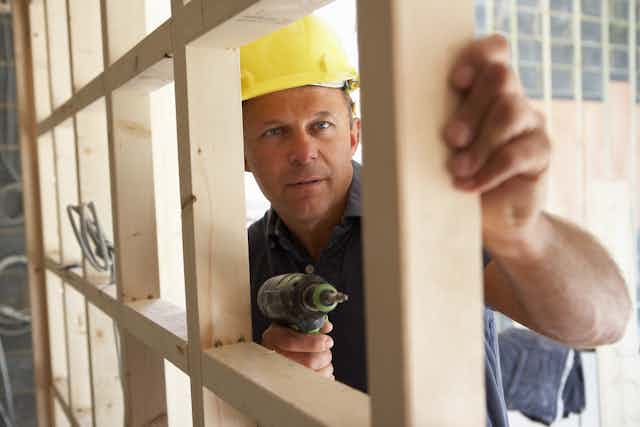A series of reforms to the planning system was recently proposed in England, including the use of a new algorithm to estimate where to build 300,000 new homes each year.
It appears to suggest that a lot more houses should be built in the south of England – and a reduction in house building targets in some northern areas. This has caused a furore among politicians, industry bodies and local government associations, with claims that the reforms will lead to too many houses being built in the south and too few in the north.
The proposed changes have added fuel to an ongoing debate around the “north-south divide”: noticeable differences in house building activities between the northern and southern regions. There are nuances to the house building debate that any decision needs to take into consideration.
Demand and supply
The proposed algorithm creates an estimate of an annual house building target for each region by factoring in demand, population growth and local affordability. Analysis of the algorithm by the Royal Town Planning Institute shows that 161% more homes would need to be built in London and the south-east, and 28% fewer homes in the north.
The reduction in house building targets for the north may be due to slower population growth, more affordability in northern areas compared to those in the south, and consideration of the gap between house prices and income over the past ten years, rather than the current year.

On the face of it, there is no denying that more and also affordable houses need to be built in the areas of high demand. There is also a definite need to set clear house building targets. Any attempt to come up with such targets is laudable. But it is not straightforward. Targets need to be carefully considered and more importantly, deliverable.
Understanding housing demand at a local level is quite tricky. Generally, housing demand estimation may include short-term factors, such as income growth, interest rates, availability of loans, level of wealth, taxes and expected future house price increases. It also takes long-term factors into account, such as population size and composition, household growth and migration rates. It not only needs to consider demand from first time buyers, but also from existing homeowners.
Social and economic interests often cross administrative boundaries in local areas. House building targets need to reflect this, and consultation is needed between local governments to establish a relevant target for the region.
In England, too, areas of high housing demand such as those in the south face a severely constrained supply of land suitable for development. If an algorithm suggests the doubling or trebling of housing targets for an area such as London or the south-east – which has a very limited availability of land suitable for development – it raises questions as to whether new targets can be actually delivered.
These targets can also lead to land prices skyrocketing. The land price inflation would be factored into the costs by the developers, and the end result may be the production of highly priced housing. This does not really address concerns about affordability.
Varied outcomes
House building is an integral part of the local economy. It creates jobs, generates incomes that support families and regenerates local areas.
A reduction in house building activities may lead to lower economic outputs. As several areas in the north continue to suffer badly as a result of the pandemic, it may add to their economic woes. A post-COVID recovery may take even longer in those areas.
The northern regions report higher levels of income deprivation and may be home to more people in exposed occupations. These tend to have significant association with COVID-19 infection rates and severity of illness.

While poor housing conditions are a national issue, it is a particular problem in the north, where there are significant quantities of pre-war, low-value housing.
New, good quality homes and improvement in housing stock are required to address poor housing conditions, even though this may not always show up in standard estimations.
A recent Public Health England study suggested that residents in sub-optimal housing are more susceptible to COVID-19. It is, therefore, very likely that these long standing inequalities will be compounded by the COVID-19 crisis.
Social and spatial imbalances in the housing market, amplified by the COVID-19 crisis, may reverberate for many years. In a post-Brexit and post-COVID UK, all regions will need attention. Policy tools are needed that can deal with the realities, eliminate regional divides and minimise sufferings across all regions.

